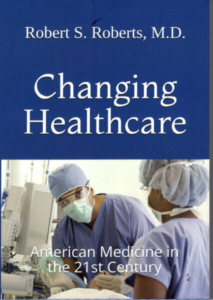The Biden administration is finally talking about reopening schools.; talking, but not actually reopening them. Even after CDC Director Rochelle Walensky announced schools were safe to reopen and teachers didn’t need to be vaccinated, the White House continued to resist reopening schools. They said Dr. Walensky was speaking “in her personal capacity”, not as the Director of the CDC. In other words, she hadn’t checked with them before making her statement. She failed to realize that “following the science” takes a back seat to “following the teachers unions” in this administration.
Now that teachers are getting vaccinated in some states, as the teachers unions demanded, the White House seems to be moving toward school reopening soon. They might even make it by the end of the school year! But here in Florida, the schools have been open all year.
Were Florida schools superspreaders as some predicted?
That’s been the big question since Florida Governor Ron DeSantis bucked the trend and reopened schools in August last year. The answer is now available. Arian Campo-Flores, writing in The Wall Street Journal, tells us the latest data show Florida schools successfully reopened without becoming superspreaders.
In August, Florida Education Commissioner Richard Corcoran directed districts to provide families the option of classroom learning five days a week or risk losing funding. The mandate triggered outcry among some teachers and parents who considered it risky, and it drew unsuccessful lawsuits aimed at blocking it.
However, seven months later, Florida schools have avoided major outbreaks of Covid-19 and maintained case rates lower than those in the wider community. In other words, schools are safer than the general community. Your children are safer at school than they are if they’re not in school. Corcoran says 80% of students in Florida are now attending schools in-person full, or part-time.
To be sure, there have been bumps in the road. Barbara Jenkins, superintendent of Orange County Public Schools, said, “It felt rushed and certainly had some glitches. I would say overall it has been successful.” Public health officials say the successful reopening was made possible by adherence to guidelines including mask wearing, social distancing, contact tracing, and quarantining. Given that adherence has been uneven, another likely reason is that young children don’t transmit the virus efficiently, said Eric Toner, senior scholar at the Johns Hopkins Center for Health Security.
Florida consistently has had lower rates of Covid-19 in schools than in the community at large, according to a data dashboard created by Brown University data company Qualtrics and others. Available information allows them to track cases among students and staff at schools, but not pinpoint whether infections occurred in schools or elsewhere.
The latest data from February show the daily case rate per 100,000 people was 22 among students and 15 among school staff, versus 27 in the community. In earlier periods going back to October, the student and staff rates were almost always less than half the community rate. The Florida experience has been corroborated in Massachusetts and New York, where long-running data show coronavirus infection rates in schools uniformly were lower than community rates.
“It is possible to reopen schools safely with appropriate mitigation,” said Emil Oster, an economics professor at Brown University who helped create the dashboard. “We’re not seeing them as locations of huge amounts of spread.”
Even Andrew Spar, president of the Florida Education Association, a teachers union that unsuccessfully sued to try to stop the governor’s executive order, admits that school reopenings ended up being safer than many feared. Now, it’s time President Biden acknowledge what Governor DeSantis decided seven months ago – it’s safe to reopen schools.

